Solar System: Things To Know This Week
Solar System: Things to Know This Week
There’s even more to Mars.

1. Batten Down the Hatches
Good news for future astronauts: scientists are closer to being able to predict when global dust storms will strike the Red Planet. The winds there don’t carry nearly the same force that was shown in the movie “The Martian,” but the dust lofted by storms can still wreak havoc on people and machines, as well as reduce available solar energy. Recent studies indicate a big storm may be brewing during the next few months.
+ Get the full forecast

2. Where No Rover Has Gone Before
Our Opportunity Mars rover will drive down an ancient gully that may have been carved by liquid water. Several spacecraft at Mars have observed such channels from a distance, but this will be the first up-close exploration. Opportunity will also, for the first time, enter the interior of Endeavour Crater, where it has worked for the last five years. All this is part of a two-year extended mission that began Oct. 1, the latest in a series of extensions going back to the end of Opportunity’s prime mission in April 2004. Opportunity landed on Mars in January of that year, on a mission planned to last 90 Martian days (92.4 Earth days). More than 12 Earth years later, it’s still rolling.
+ Follow along + See other recent pictures from Endeavour Crater

3. An Uphill Climb
Opportunity isn’t the only NASA Mars rover getting a mission extension. On the other side of the planet, the Curiosity rover is driving and collecting samples amid some of the most scenic landscapes ever visited on Mars. Curiosity’s two-year mission extension also began Oct. 1. It’s driving toward uphill destinations, including a ridge capped with material rich in the iron-oxide mineral hematite, about a mile-and-a-half (two-and-a-half kilometers) ahead. Beyond that, there’s an exposure of clay-rich bedrock. These are key exploration sites on lower Mount Sharp, which is a layered, Mount-Rainier-size mound where Curiosity is investigating evidence of ancient, water-rich environments that contrast with the harsh, dry conditions on the surface of Mars today.
+ Learn more

4. Keep a Sharp Lookout
Meanwhile, the Mars Reconnaissance Orbiter continues its watch on the Red Planet from above. The mission team has just released a massive new collection of super-high-resolution images of the Martian surface.
+ Take a look

5. 20/20 Vision for the 2020 Rover
In the year 2020, Opportunity and Curiosity will be joined by a new mobile laboratory on Mars. In the past week, we tested new “eyes” for that mission. The Mars 2020 rover’s Lander Vision System helped guide the rocket to a precise landing at a predesignated target. The system can direct the craft toward a safe landing at its primary target site or divert touchdown toward better terrain if there are hazards in the approaching target area.
+ Get details
Discover the full list of 10 things to know about our solar system this week HERE.
Make sure to follow us on Tumblr for your regular dose of space: http://nasa.tumblr.com
More Posts from Maevetheeuropan and Others
this website pisses me off, everyones always like “space is so cool!” not its not, space is bullshit and i hate everything about it, i genuinely just saw the phrase “a black hole with a mass two billion times the mass of the sun” im so pissed off, shut the fuck up, dont patronise me scientists you know i dont know what the fuck that means, my sad little brain cant comprehend the mass of one sun let alone two fucking billion, i cant even count past 10 without getting confused and youre out here talking about the mass of two billion fucking suns, shut the hell up. and dont even get me started about black holes or the expansion of the universe because thats another two seperate rants entierly. oh and apparently theres a planet made of ice except the ice is also on fire??? yeah sure fucking thing, scientists. and this is just the shit i know about. i purposely dont research space because it pisses me off so much, god knows what other fucking bullshit exists out there that ive yet to read a fucking wikipedia article about. i dont think space is real, literally everything about space is so fucking fake, this is just some elaborate fucking practicle joke. two billion times the mass of the sun, fuck you
SpaceX Sends Super Science to Space Station!
SpaceX is scheduled to launch its Dragon spacecraft PACKED with super cool research and technology to the International Space Station June 1 from Kennedy Space Center in Florida. New solar panels, investigations that study neutron stars and even fruit flies are on the cargo list. Let’s take a look at what other bits of science are making their way to the orbiting laboratory 250 miles above the Earth…

New solar panels to test concept for more efficient power source
Solar panels generate power well, but they can be delicate and large when used to power a spacecraft or satellites. This technology demonstration is a solar panel concept that is lighter and stores more compactly for launch than the solar panels currently in use.

Roll-Out Solar Array (ROSA) has solar cells on a flexible blanket and a framework that rolls out like a tape measure and snap into place, and could be used to power future space vehicles.
Investigation to Study Composition of Neutron Stars
Neutron stars, the glowing cinders left behind when massive stars explode as supernovas, contain exotic states of matter that are impossible to replicate in any lab. NICER studies the makeup of these stars, and could provide new insight into their nature and super weird behavior.

Neutron stars emit X-ray radiation, enabling the NICER technology to observe and record information about its structure, dynamics and energetics.
Experiment to Study Effect of New Drug on Bone Loss
When people and animals spend lots of space, they experience bone density loss. In-flight exercise can prevent it from getting worse, but there isn’t a therapy on Earth or in space that can restore bone that is already lost.

The Systemic Therapy of NELL-1 for osteoporosis (Rodent Research-5) investigation tests a new drug that can both rebuild bone and block further bone loss, improving health for crew members.
Research to Understand Cardiovascular Changes
Exposure to reduced gravity environments can result in cardiovascular changes such as fluid shifts, changes in total blood volume, heartbeat and heart rhythm irregularities, and diminished aerobic capacity.

The Fruit Fly Lab-02 study will use the fruit fly (Drosophila melanogaster) to better understand the underlying mechanisms responsible for the adverse effects of prolonged exposure to microgravity on the heart. Fruit flies are effective model organisms, and we don’t mean on the fashion runway. Want to see how 1,000 bottles of fruit flies were prepared to go to space? Check THIS out.
Space Life-Support Investigation
Currently, the life-support systems aboard the space station require special equipment to separate liquids and gases. This technology utilizes rotating and moving parts that, if broken or otherwise compromised, could cause contamination aboard the station.

The Capillary Structures investigation studies a new method of water recycling and carbon dioxide removal using structures designed in specific shapes to manage fluid and gas mixtures.
Earth-Observation Tools
Orbiting approximately 250 miles above the Earth’s surface, the space station provides pretty amazing views of the Earth. The Multiple User System for Earth Sensing (MUSES) facility hosts Earth-viewing instruments such as high-resolution digital cameras, hyperspectral imagers, and provides precision pointing and other accommodations.

This investigation can produce data that could be used for maritime domain awareness, agricultural awareness, food security, disaster response, air quality, oil and gas exploration and fire detection.
Watch the launch live HERE! For all things space station science, follow @ISS_Research on Twitter.
Make sure to follow us on Tumblr for your regular dose of space: http://nasa.tumblr.com

Mega-tsunamis in an ancient ocean on Mars may have shaped the landscape and left deposits that hint at whether the planet was once habitable, researchers say.
The giant waves, thought to have reached up to 120 metres in height as they raced over the land, could have been triggered by two large meteorites slamming into the surface.
The tsunamis may been powerful enough to shape much of the ancient coastlines on Mars, said J. Alexis Palmero Rodriguez, of the Planetary Science Institute in Tucson, Arizona, who led the study.
Writing in the journal Scientific Reports, the international team, which included scientists from the US, China and Germany, describe how they set out to probe a Martian mystery.
It has previously been proposed that the lowlands of the northern hemisphere of Mars were catastrophically flooded around 3.4 billion years ago, forming a vast ocean, potentially covering several million square kilometres. But scientists have been puzzled by the lack of an associated shoreline and its expected features.
Now Rodriguez and his team think they may have the answer- the fact that it is hard to make out such ancient shorelines is because huge tsunamis buried them, depositing sediments up to hundreds of kilometres inland.
Continue Reading.




Dynamic projection mapping onto deforming non-rigid surface
Truly impressive technology from Ishikawa Watanabe Laboratory, University of Tokyo, can accurately projection map on moving, loose, dynamic surfaces:
We realize dynamic projection mapping onto deforming non-rigid surface based on two original technologies. The first technology is a high-speed projector “DynaFlash” that can project 8-bit images up to 1,000 fps with 3 ms delay. The second technology is a high-speed non-rigid surface tracking at 1,000 fps. Since the projection and sensing are operated at a speed of 1,000 fps, a human cannot perceive any misalignment between the dynamically-deforming target and the projected images. Especially, focusing on new paradigms in the field of user interface and fashion, we have demonstrated dynamic projection mapping onto a deformed sheet of paper and T-shirt. Also we show that projection to multiple targets can be controlled flexibly by using our recognition technique.
More Here
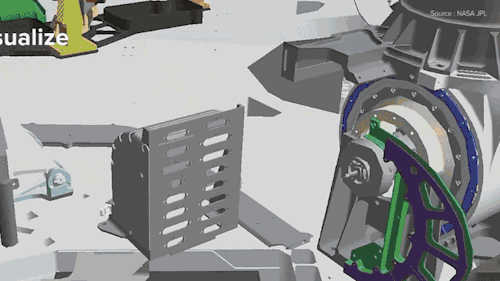
NASA is building the next Mars rover in mixed reality and It’s absolutely jaw-dropping!
Living and Working Aboard Station
Join us on Facebook Live for a conversation with astronaut Kate Rubins and the director of the National Institutes for Health on Tuesday, October 18 at 11:15 a.m. ET.
Astronaut Kate Rubins has conducted out of this world research aboard Earth’s only orbiting laboratory. During her time aboard the International Space Station, she became the first person to sequence DNA in space. On Tuesday, she’ll be live on Facebook with National Institute of Health director Francis Collins, who led the effort to map the human genome. You can submit questions for Kate using the hashtag #SpaceChat on Twitter, or during the live event. Here’s a primer on the science this PhD astronaut has been conducting to help inspire your questions:

Kate has a background in genomics (a branch of molecular genetics that deals with the study of genomes,specifically the identification and sequencing of their constituent genes and the application of this knowledge in medicine, pharmacy,agriculture, and other fields). When she began her tenure on the station, zero base pairs of DNA had been sequenced in space. Within just a few weeks, she and the Biomolecule Sequencer team had sequenced their one billionth base of DNA aboard the orbital platform.
“I [have a] genomics background, [so] I get really excited about that kind of stuff,” Rubins said in a downlink shortly after reaching the one billion base pairs sequenced goal.
Learn more about this achievement:
+First DNA Sequencing in Space a Game Changer
+Science in Short: One Billion Base Pairs Sequenced
Why is DNA Sequencing in Space a Big Deal?
A space-based DNA sequencer could identify microbes, diagnose diseases and understand crew member health, and potentially help detect DNA-based life elsewhere in the solar system.
+Why Sequencing DNA in Space is a Big Deal
https://youtu.be/1N0qm8HcFRI
Miss the Reddit AMA on the subject? Here’s a transcript:
+NASA AMA: We just sequenced DNA in space for the first time. Ask us anything!
NASA and Its Partnerships

We’re not doing this alone. Just like the DNA sequencing was a collaborative project with industry, so is the Eli Lilly Hard to Wet Surfaces investigation. In this experiment aboard the station, astronauts will study how certain materials used in the pharmaceutical industry dissolve in water while in microgravity. Results from this investigation could help improve the design of tablets that dissolve in the body to deliver drugs, thereby improving drug design for medicines used in space and on Earth. Learn more about what we and our partners are doing:
+Eli Lilly Hard to Wet Surfaces – been happening the last week and a half or so
Researchers to Test How Solids Dissolve in Space to Design Better Tablets and Pills on Earth
With our colleagues at the Stanford University School of Medicine, we’re also investigating the effects of spaceflight on stem cell-derived heart cells, specifically how heart muscle tissue, contracts, grows and changes in microgravity and how those changes vary between subjects. Understanding how heart muscle cells change in space improves efforts for studying disease, screening drugs and conducting cell replacement therapy for future space missions. Learn more:
+Heart Cells
+Weekly Recap From the Expedition Lead Scientist for Aug. 18, 2016
It’s Not Just Medicine

Kate and her crew mates have also worked on the combustion experiments.
Kate has also worked on the Bigelow Expandable Activity Module (BEAM), an experimental expandable capsule that docks with the station. As we work on our Journey to Mars, future space habitats are a necessity. BEAM, designed for Mars or other destinations, is a lightweight and relatively simple to construct solution. Kate has recently examined BEAM, currently attached to the station, to take measurements and install sensors.

Kate recently performed a harvest of the Plant RNA Regulation experiment, by removing seed cassettes and stowing them in cold stowage.

The Plant RNA Regulation investigation studies the first steps of gene expression involved in development of roots and shoots. Scientists expect to find new molecules that play a role in how plants adapt and respond to the microgravity environment of space, which provides new insight into growing plants for food and oxygen supplies on long-duration missions. Read more about the experiment:
+Plant RNA Harvest
NASA Astronaut Kate Rubins is participating in several investigations examining changes in her body as a result of living in space. Some of these changes are similar to issues experienced by our elderly on Earth; for example, bone loss (osteoporosis), cardiovascular deconditioning, immune dysfunction, and muscle atrophy. Understanding these changes and how to prevent them in astronauts off the Earth may help improve health for all of us on the Earth. In additional, the crew aboard station is also working on more generalized studies of aging.
+ Study of the effects of aging on C. elegans, a model organism for a range of biological studies.
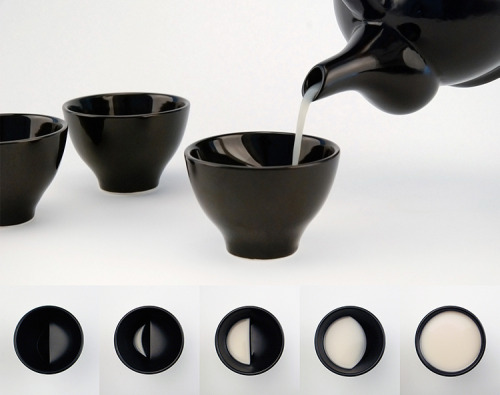

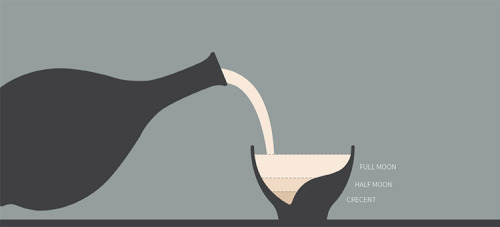
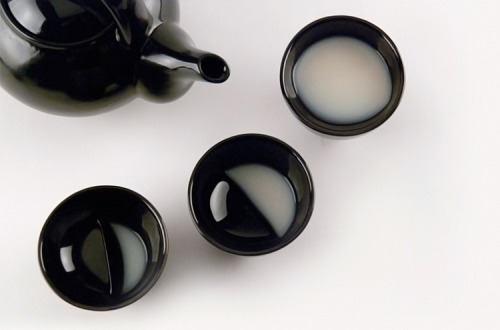


Moon Glass: A Ceramic Cup That Showcases the Different Phases of the Moon the More You Drink From It
South Korean design studio Tale Co., Ltd. has created an ingenious ceramic liquor called the Moon Glass, which displays different phases of the moon as you drink from it. The adorable glasses are available to purchase on their website.
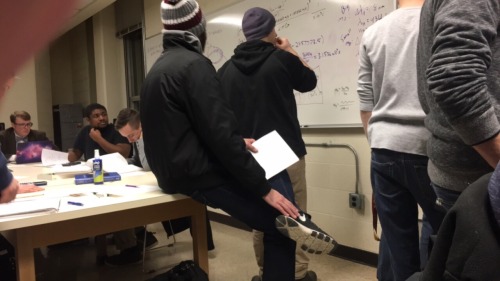
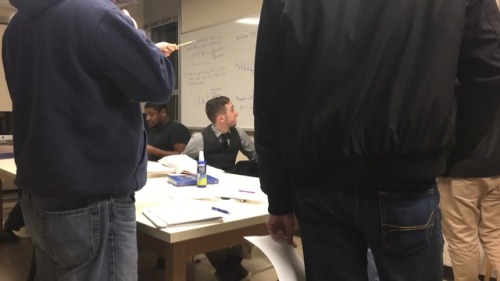
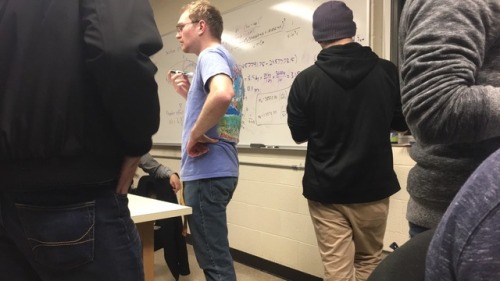
The beautiful chaos of watching 12 frantic astrophysics students try to save a theoretical astronaut from falling into a black hole. I’ve never seen a group of people work so quickly and efficiently before.
-
 ase23 liked this · 8 years ago
ase23 liked this · 8 years ago -
 best-hotels-posts reblogged this · 8 years ago
best-hotels-posts reblogged this · 8 years ago -
 mrdr1 reblogged this · 8 years ago
mrdr1 reblogged this · 8 years ago -
 theparkerlvck reblogged this · 8 years ago
theparkerlvck reblogged this · 8 years ago -
 theparkerlvck liked this · 8 years ago
theparkerlvck liked this · 8 years ago -
 ruimtetijd reblogged this · 8 years ago
ruimtetijd reblogged this · 8 years ago -
 shizuoi reblogged this · 8 years ago
shizuoi reblogged this · 8 years ago -
 livingwithendo reblogged this · 8 years ago
livingwithendo reblogged this · 8 years ago -
 ghostibot reblogged this · 8 years ago
ghostibot reblogged this · 8 years ago -
 seaki reblogged this · 8 years ago
seaki reblogged this · 8 years ago -
 yugifrolife reblogged this · 8 years ago
yugifrolife reblogged this · 8 years ago -
 yugifrolife liked this · 8 years ago
yugifrolife liked this · 8 years ago -
 voyager2-remade reblogged this · 8 years ago
voyager2-remade reblogged this · 8 years ago -
 voyager2-remade liked this · 8 years ago
voyager2-remade liked this · 8 years ago -
 sylvermyth reblogged this · 8 years ago
sylvermyth reblogged this · 8 years ago -
 f-l-i-r-t-e-u-s-e liked this · 8 years ago
f-l-i-r-t-e-u-s-e liked this · 8 years ago -
 dlarix liked this · 8 years ago
dlarix liked this · 8 years ago -
 hearthburn reblogged this · 8 years ago
hearthburn reblogged this · 8 years ago -
 machineman02 liked this · 8 years ago
machineman02 liked this · 8 years ago -
 artsdrawingsandgamesold-blog liked this · 8 years ago
artsdrawingsandgamesold-blog liked this · 8 years ago -
 ichijoukenichiro liked this · 8 years ago
ichijoukenichiro liked this · 8 years ago -
 poro-oletettu reblogged this · 8 years ago
poro-oletettu reblogged this · 8 years ago -
 nofii95 liked this · 8 years ago
nofii95 liked this · 8 years ago -
 hearthburn liked this · 8 years ago
hearthburn liked this · 8 years ago -
 tosstwo reblogged this · 8 years ago
tosstwo reblogged this · 8 years ago -
 the-galaxy-had-died-blog liked this · 8 years ago
the-galaxy-had-died-blog liked this · 8 years ago -
 goodmorning-night liked this · 8 years ago
goodmorning-night liked this · 8 years ago -
 craigkritter liked this · 8 years ago
craigkritter liked this · 8 years ago -
 stubbornasacat reblogged this · 8 years ago
stubbornasacat reblogged this · 8 years ago -
 stubbornasacat liked this · 8 years ago
stubbornasacat liked this · 8 years ago -
 diverselygeek reblogged this · 8 years ago
diverselygeek reblogged this · 8 years ago -
 a-star-dusted-royal reblogged this · 8 years ago
a-star-dusted-royal reblogged this · 8 years ago -
 alienfrauds liked this · 8 years ago
alienfrauds liked this · 8 years ago -
 scryfox reblogged this · 8 years ago
scryfox reblogged this · 8 years ago

